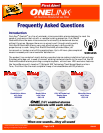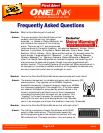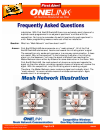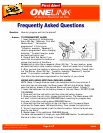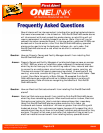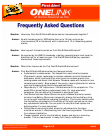
Page 5 of 9 CM2837
**Interconnected alarms provide added
warning as compared to single alarms.
Question: What is the Spread Spectrum Horn Tone?
Answer: The Spread Spectrum Horn Tone
is a lower and varying horn
frequency that sweeps through
the 2200 – 3400 Hz range. As we
age we lose the capability of
hearing higher frequencies. This
lower frequency and sweeping
tone make it easier for the
elderly with normal age related
hearing loss to better hear the
horn as compared to a standard
horn. This is an important
feature to discuss with
customers as the overall
population is getting older as the
Baby Boomer’s population segment moves into their 50’s, 60’s and 70’s. The first
US Baby Boomers will turn 65 in 2011. (The baby boom refers to people born in
the post-World War II period from 1946 through 1964). This market potential is
already being targeted by builders as evidenced by the increase in the
development of more “Over 55” communities. American’s 55 and older will head
40% of the nation’s households by 2012. No other alarm manufacturer has
recognized this potential and has this feature to date.
Question: How can First Alert® OneLink® alarms be relevant for contractors who have
existing home additions projects?
Answer: When dealing with new construction for existing home additions, the First Alert®
OneLink® “Bridge” unit (SA520B) is a perfect solution. It is often difficult to
connect to the existing alarm circuit when dealing with home additions.
Concrete, steel, laminated beams, etc. are blocking easy access. Building codes
state that the alarms must be hardwired for power, but do not have to be
hardwired for interconnect. Therefore, the SA520B can be used in the new
addition, where power can be obtained locally from a lighting or outlet circuit.
In the existing part of the home, just replace one of the existing hardwired units
with the SA520. Link the two alarms to “bridge” the old and the new sections.



